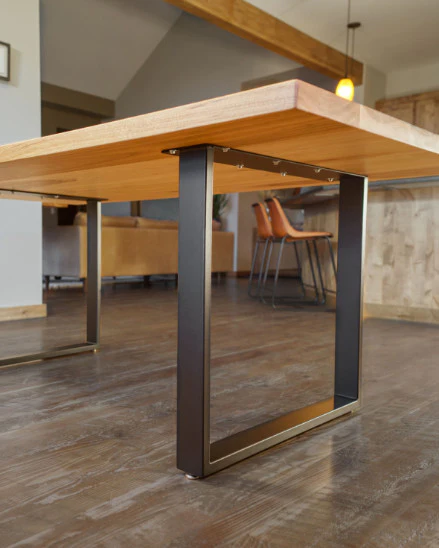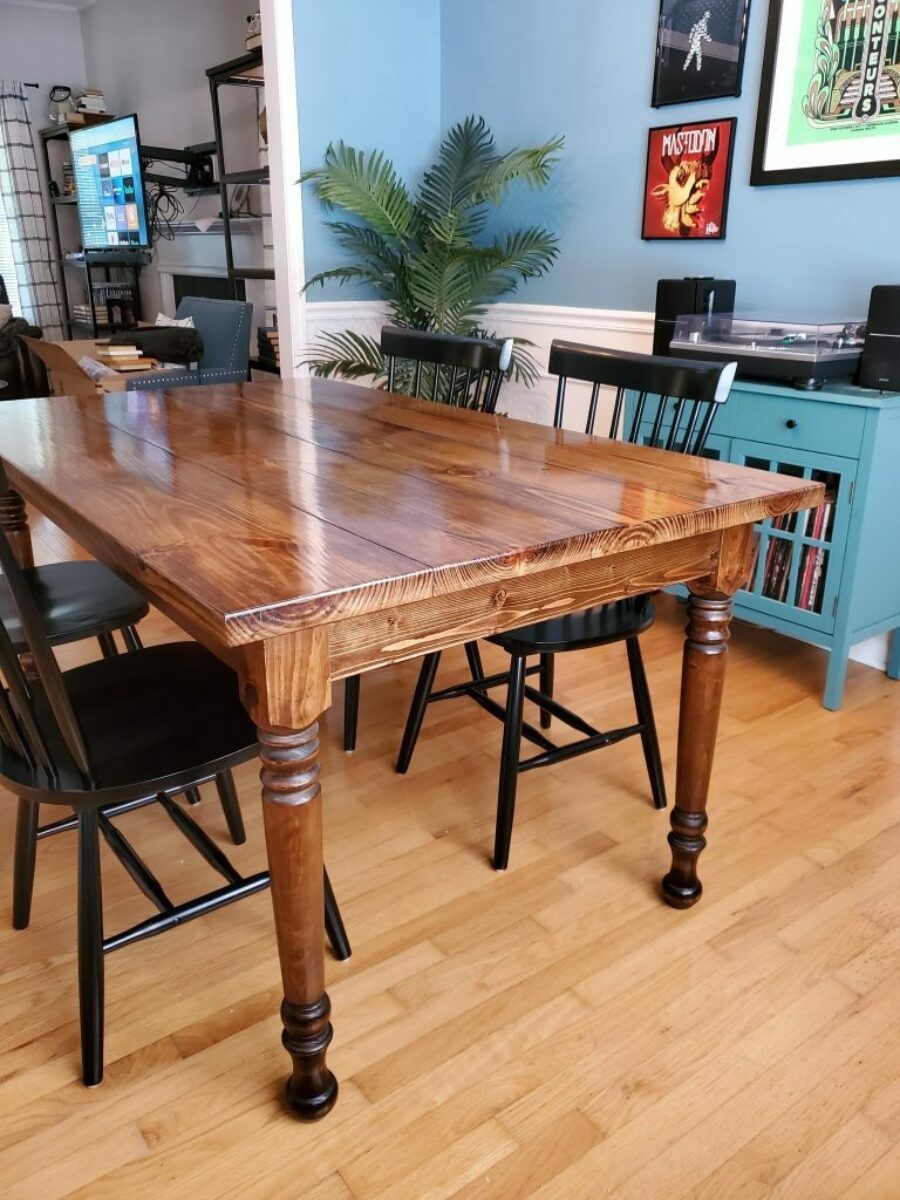From Typical to Modern: Discover the Suitable Dining-room Table Legs for Your Design
The choice of dining-room table legs plays a crucial function in specifying the total character of your space, connecting the space between traditional workmanship and contemporary looks. While traditional styles such as cabriole and transformed legs evoke a feeling of timeless elegance, contemporary designs like hairpin and geometric choices present a possibility for striking aesthetic rate of interest. Evaluating the right balance between these styles needs a nuanced understanding of your existing decoration and individual preference. As you think about these elements, the concern remains: how can you effortlessly integrate these diverse leg designs to create a harmonious dining experience?
Recognizing Table Leg Styles
The variety of dining-room table leg styles can considerably influence both the appearances and performance of the space. Each leg design adds one-of-a-kind useful functions and aesthetic elements, accommodating diverse layout choices and use requirements. Recognizing these styles is vital for choosing the appropriate table that aligns with your general indoor design vision.
As an example, tapered legs supply a clean, traditional look that can enhance a room's style, while pedestal bases provide security and optimize legroom, making them excellent for smaller spaces. Barrette legs, a trademark of mid-century modern style, present an industrial flair, permitting for a ventilated, open feeling. Likewise, trestle legs evoke rustic beauty, supplying robust support and a feeling of eternity.
Wooden legs can bring warmth and texture, whereas steel choices often communicate a streamlined, modern ambiance. Ultimately, understanding table leg styles is vital for developing a natural dining area that shows individual design while making certain functionality and convenience.
Standard Table Leg Options
When selecting dining-room table legs, traditional options commonly embody timeless beauty and workmanship. These designs reflect a rich heritage and a dedication to quality, making them optimal for those that value traditional aesthetics.
One of the most renowned typical leg styles is the cabriole leg, characterized by its stylish rounded shape. This style frequently features ornamental makings and is most typically found in Queen Anne and Chippendale furnishings. An additional preferred choice is the transformed leg, which boasts a collection of smooth, rounded shapes that offer a classic appearance while keeping security.
Moreover, the straight leg, while easy, supplies a unadorned and strong structure that can mix effortlessly with a selection of tabletop styles. For those attracted to ornate describing, claw-and-ball feet legs stimulate a feeling of majesty and can offer as a spectacular centerpiece in any type of eating space.
Finally, pedestal bases, although not strictly legs, offer a different standard option that permits ample legroom and can be beautifully sculpted. Each of these traditional leg designs contributes to the total atmosphere of a dining-room, marrying function with aesthetic allure.

Modern Table Leg Styles
Modern table leg layouts supply a diverse series of designs that emphasize cutting-edge products and tidy lines. These styles commonly focus on performance while functioning as striking centerpieces within a dining space. Minimalist aesthetic appeals are prevalent, with legs crafted from materials such as steel, glass, and engineered timber, which moved here add to a modern and airy feeling.
One popular style is the barrette leg, defined by its slender, tapered structure that supplies stability click for info without frustrating the tabletop (dining room table legs). This design is often discovered in mid-century modern furnishings and can effortlessly match numerous dining table forms. An additional pattern is using geometric shapes, where legs may take on asymmetrical or angular kinds, adding aesthetic passion and a touch of virtuosity

Mixing Styles for Distinct Rooms
Often, home owners seek to produce one-of-a-kind dining rooms that mirror their individual style by mixing various style elements. This technique enables the incorporation of varied visual appeals, resulting in an unified yet unique setting. Matching a rustic wood table with smooth, modern-day metal legs can create an eye-catching contrast that elevates the area's general allure.
In addition, integrating vintage table legs with modern tabletops can evoke a sense of history while keeping a modern-day sensibility. Such combinations not just showcase private preference but also urge creative thinking, allowing house owners to curate an area that really feels both personal and welcoming.
Shade plays a critical role in this blending process; picking table helpful site legs that match or comparison with the existing color design can improve aesthetic passion. As an example, whitewashed legs can soften the boldness of a dark table surface, creating a balanced aesthetic.
Tips for Choosing the Right Legs
Selecting the right table legs is necessary for attaining both performance and visual allure in your dining room. Begin by considering the total style of your room. Conventional settings benefit from legs that feature intricate carvings or transformed styles, while contemporary areas may call for streamlined, minimal styles.
Following, assess the height and security of the legs. dining room table legs. Common table vary in between 28 to 30 inches in elevation, so make sure the legs enhance this measurement for convenience. Furthermore, durable products, such as hardwood or steel, can enhance security and long life
Evaluate the leg form too-- alternatives consist of straight, tapered, or pedestal layouts. Straight legs offer a traditional appearance, while tapered legs can add a touch of sophistication. Pedestal bases supply adequate legroom and are ideal for smaller rooms.
Verdict
In recap, choosing the ideal dining-room table legs calls for mindful factor to consider of both modern-day and traditional styles. Typical choices such as cabriole and transformed legs supply ageless style, while contemporary designs like hairpin and geometric shapes supply a contemporary touch. By harmonizing leg design, elevation, and product with the total décor, a natural and welcoming atmosphere can be attained. Inevitably, the picked table legs must show the wanted aesthetic, enhancing the eating experience within the area.
The selection of eating room table leg designs can dramatically influence both the aesthetic appeals and functionality of the room. Inevitably, understanding table leg designs is crucial for producing a natural eating location that shows personal design while making certain usefulness and convenience.One of the most legendary standard leg designs is the cabriole leg, characterized by its stylish curved form. Straight legs supply a traditional appearance, while conical legs can include a touch of elegance.In summary, choosing the suitable eating room table legs requires mindful factor to consider of both contemporary and standard styles.